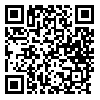Volume 13, Issue 3 (Volume 13, No 3 2022)
jdc 2022, 13(3): 203-208 |
Back to browse issues page
Download citation:
BibTeX | RIS | EndNote | Medlars | ProCite | Reference Manager | RefWorks
Send citation to:



BibTeX | RIS | EndNote | Medlars | ProCite | Reference Manager | RefWorks
Send citation to:
Rahmati J, Haddady Abianeh S, Abdolrazaghi H, Molaei H. Simple technique to reduce dog ear formation at the end of skin closure in skin lesion excision. jdc 2022; 13 (3) :203-208
URL: http://jdc.tums.ac.ir/article-1-5622-en.html
URL: http://jdc.tums.ac.ir/article-1-5622-en.html
1- Department of Plastic and Reconstructive Surgery, Imam Khomeini Hospital Complex, School of Medicine, Tehran University of Medical Sciences, Tehran, Iran * Department of Plastic and Reconstructive Surgery, Razi Hospital, School of Medicine, Tehran University of Medical Sciences, Tehran, Iran
2- Department of Hand & Reconstructive Surgery, Sina Hospital, Tehran University of Medical Sciences, Tehran, Iran
3- Department of Plastic and Reconstructive Surgery, Imam Khomeini Hospital Complex, School of Medicine, Tehran University of Medical Sciences, Tehran, Iran ,hmolaei@sina.tums.ac.ir
2- Department of Hand & Reconstructive Surgery, Sina Hospital, Tehran University of Medical Sciences, Tehran, Iran
3- Department of Plastic and Reconstructive Surgery, Imam Khomeini Hospital Complex, School of Medicine, Tehran University of Medical Sciences, Tehran, Iran ,
Abstract: (966 Views)
Background: Skin lesions and need for tissue evaluation, makes skin surgery an important part of treatment. Each excision is accompanied by skin repair. One of side effects of lesion excision is dog ear and cosmetic problems, particulary on face.
Case Report: A middle age woman presented with an old leishmaniosis scar in her face. she asked how can we remove the lesion with minimal scar. In the planned operation the lesion was excised some deeper fatty tissues at both ends. At the end of wound closure, there was not ant dog ear around wound.
Conclusion: There are numerous options to prevent and correct dog ears at the end of skin closure- depending on size and location of the lesion. in our recommended technique, subdermal fatty excision attached to the lesion, may remain minimal extra skin at the end of skin closure.
Case Report: A middle age woman presented with an old leishmaniosis scar in her face. she asked how can we remove the lesion with minimal scar. In the planned operation the lesion was excised some deeper fatty tissues at both ends. At the end of wound closure, there was not ant dog ear around wound.
Conclusion: There are numerous options to prevent and correct dog ears at the end of skin closure- depending on size and location of the lesion. in our recommended technique, subdermal fatty excision attached to the lesion, may remain minimal extra skin at the end of skin closure.
Type of Study: case report |
Subject:
General
Received: 2022/12/20 | Accepted: 2022/11/6 | Published: 2022/11/6
Received: 2022/12/20 | Accepted: 2022/11/6 | Published: 2022/11/6
Send email to the article author
| Rights and permissions | |
 |
This work is licensed under a Creative Commons Attribution-NonCommercial 4.0 International License. |






